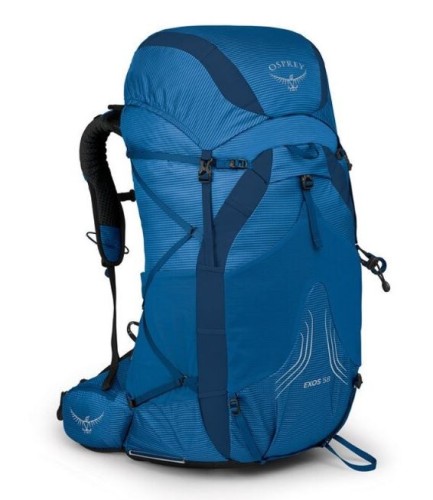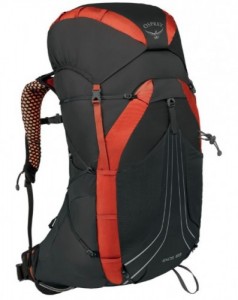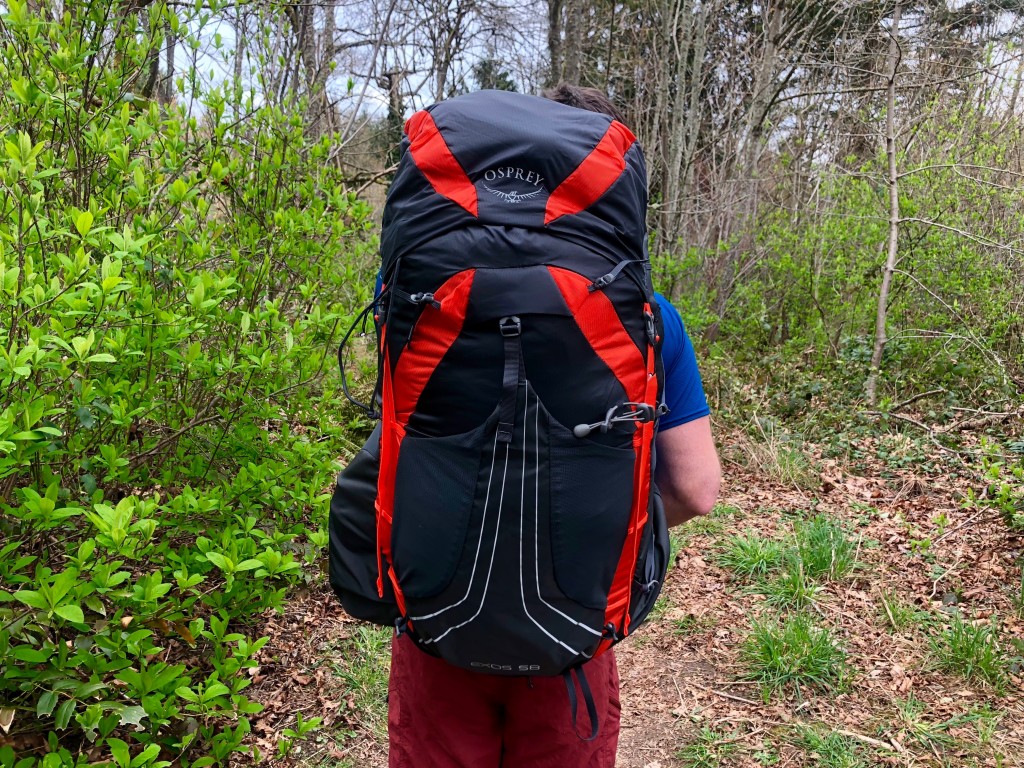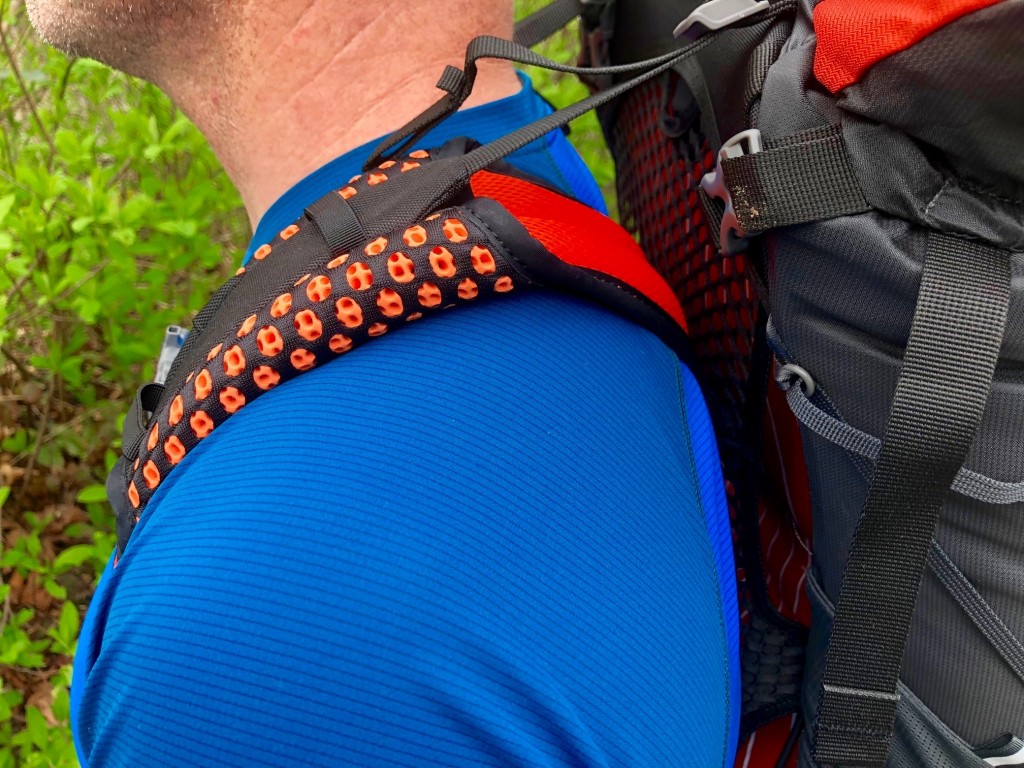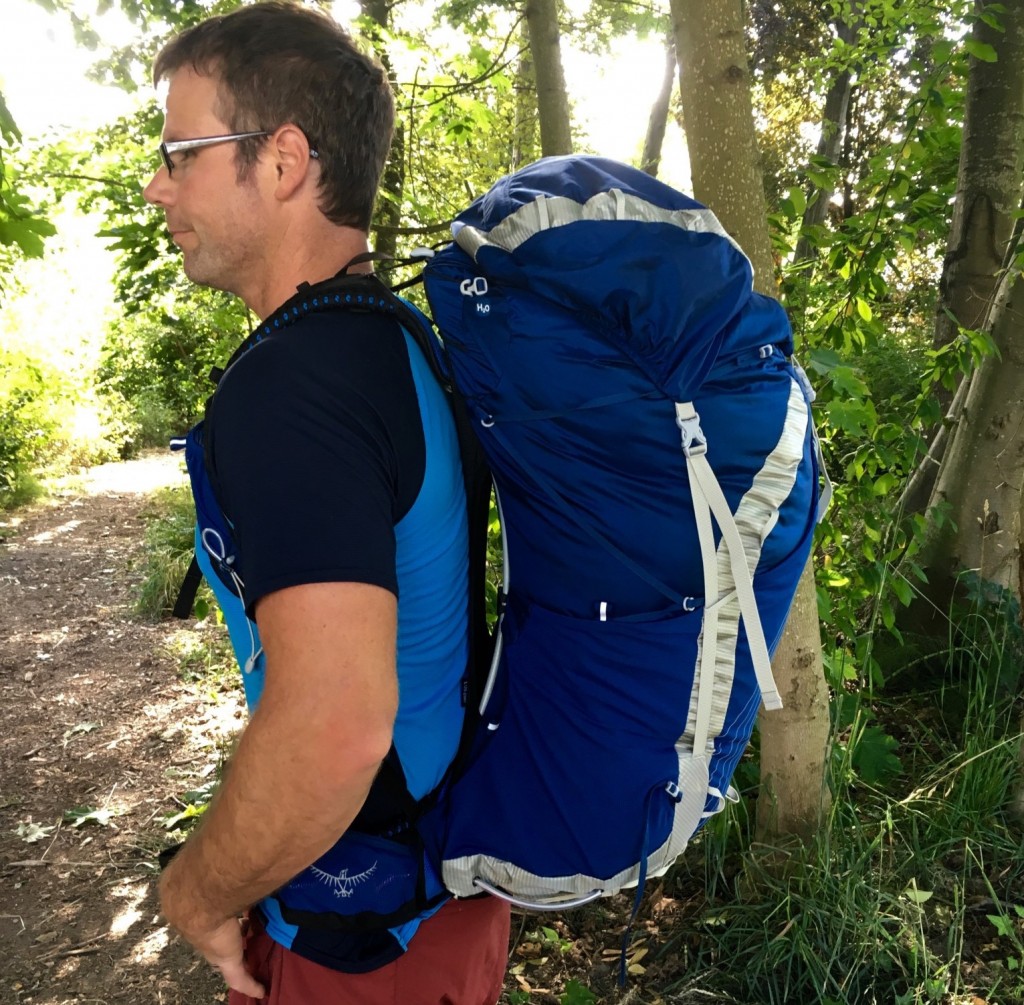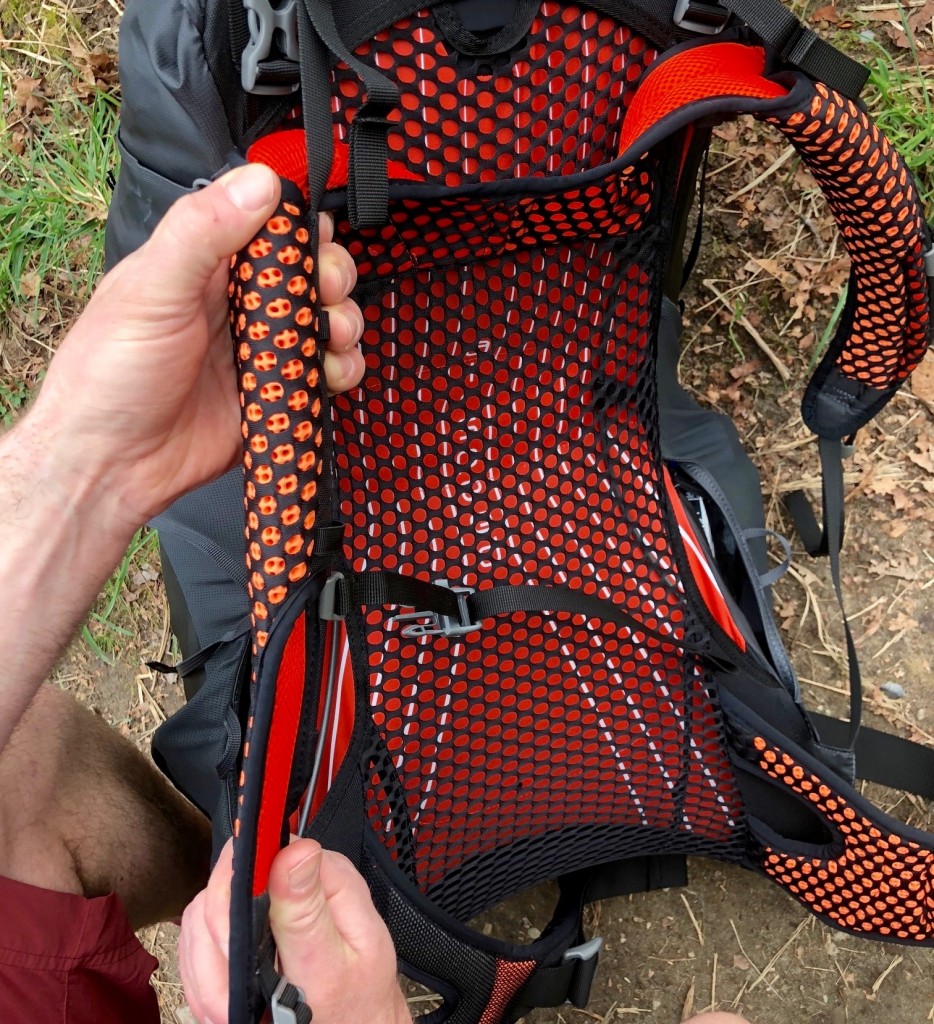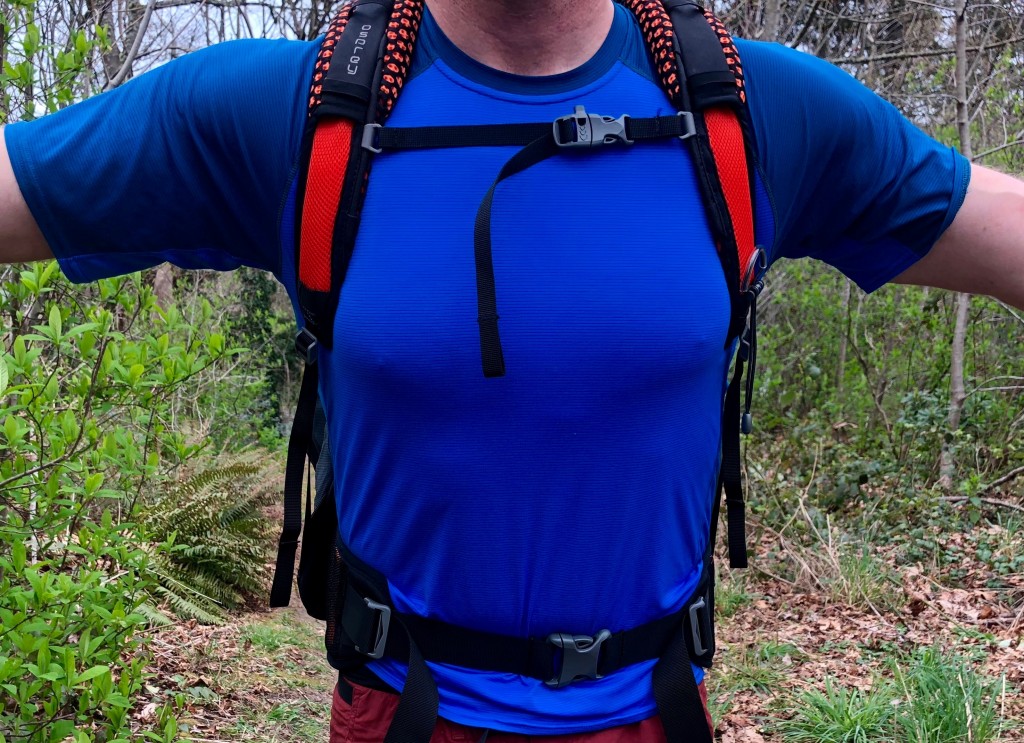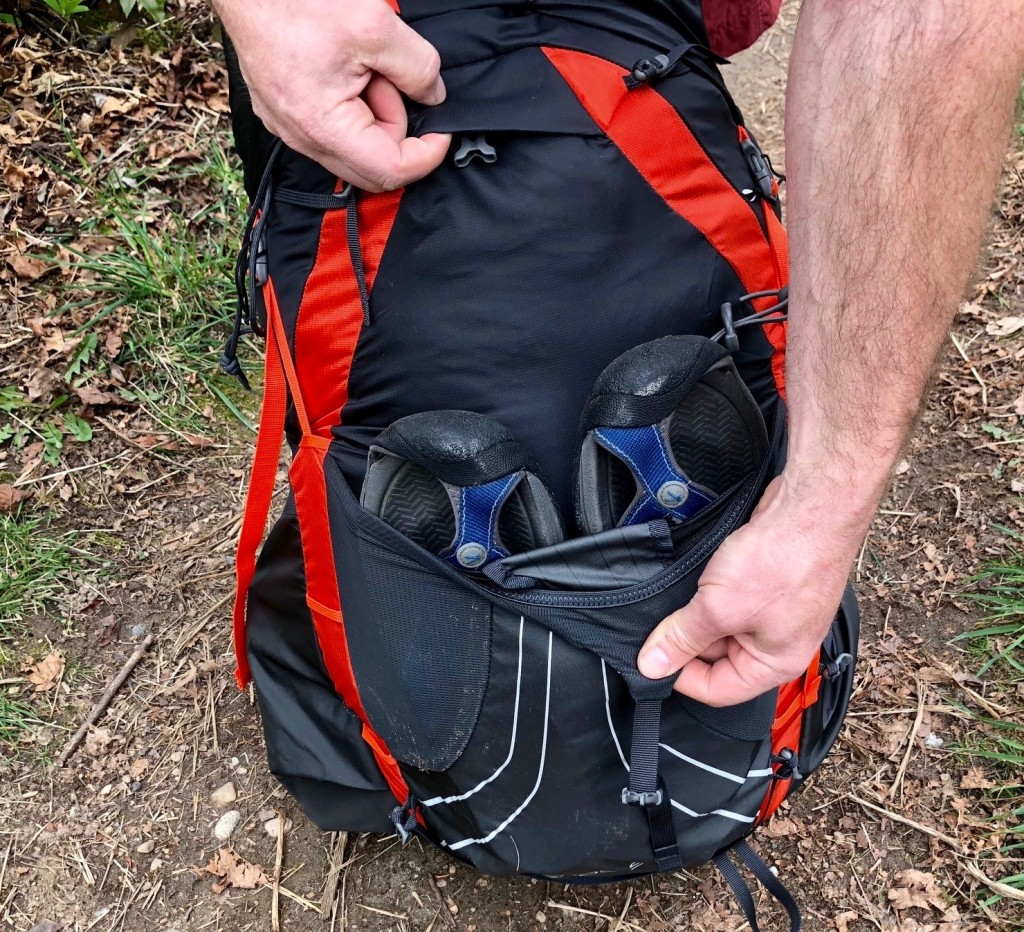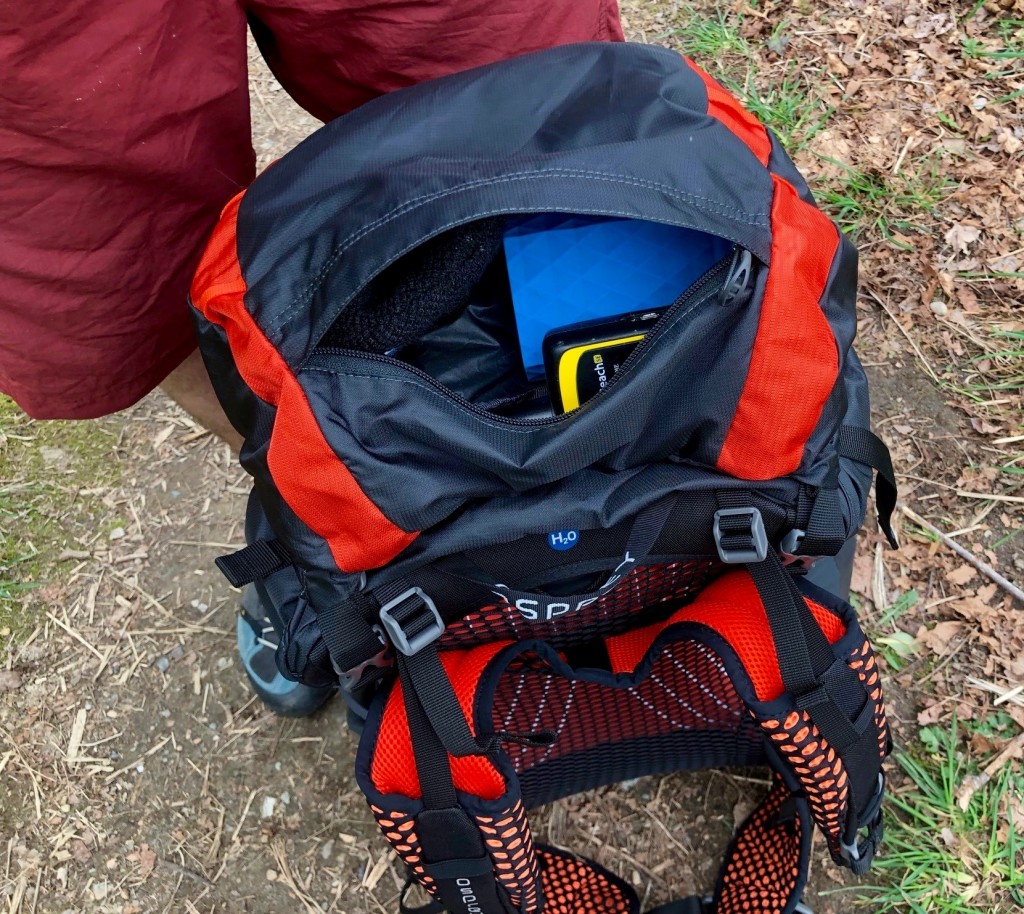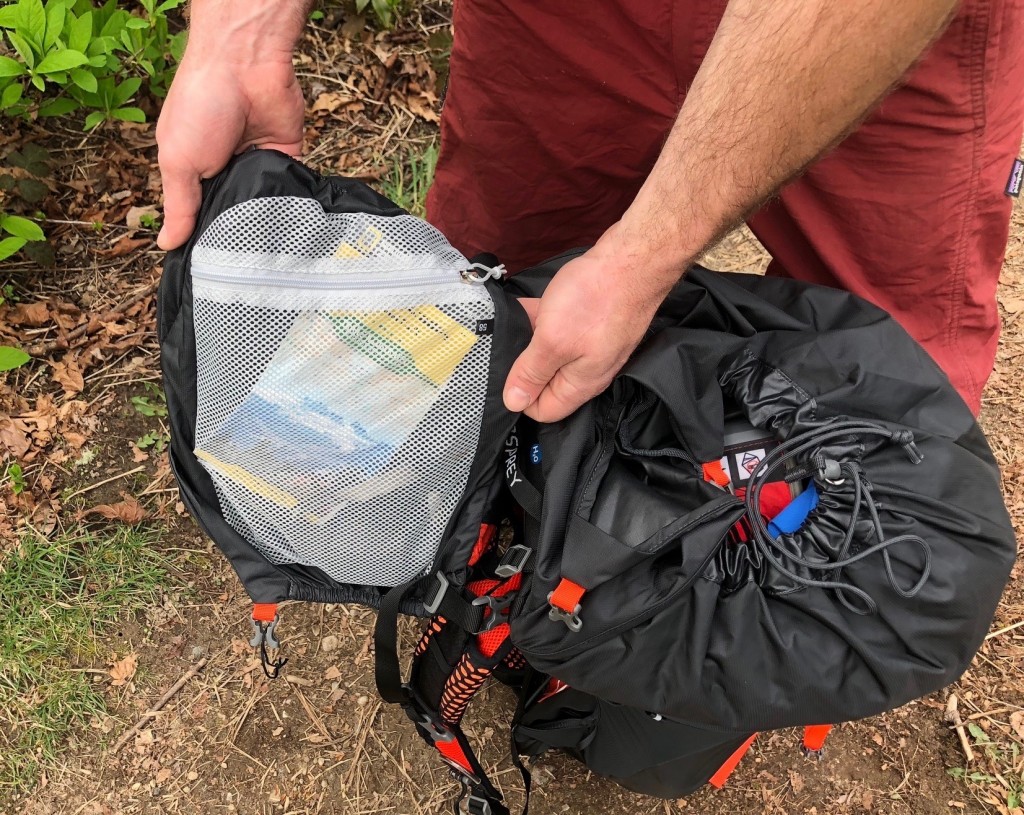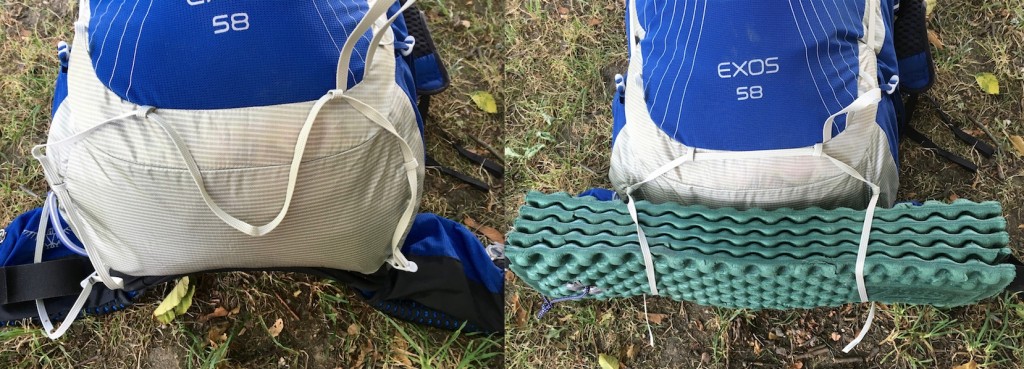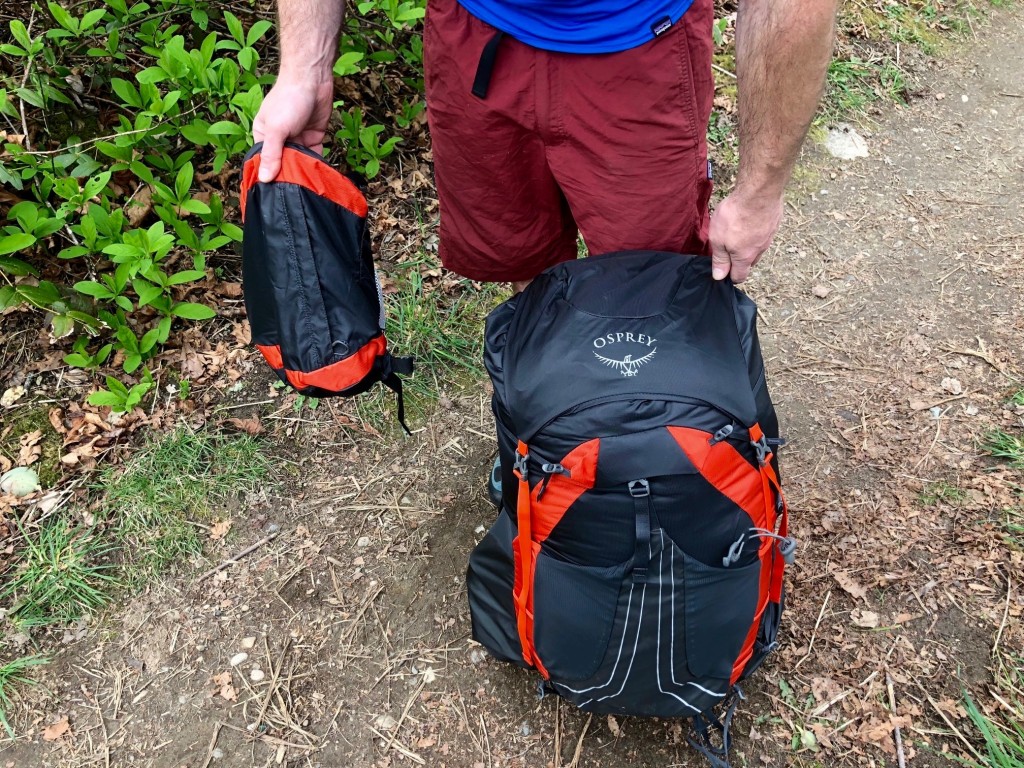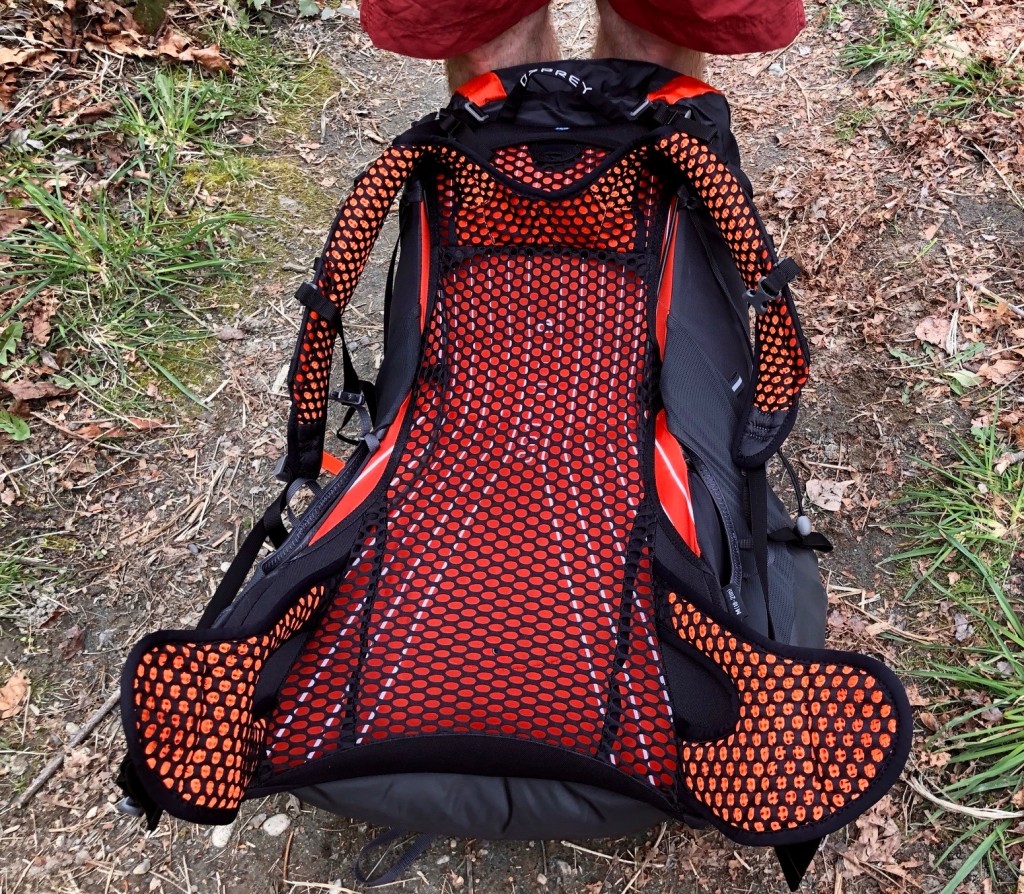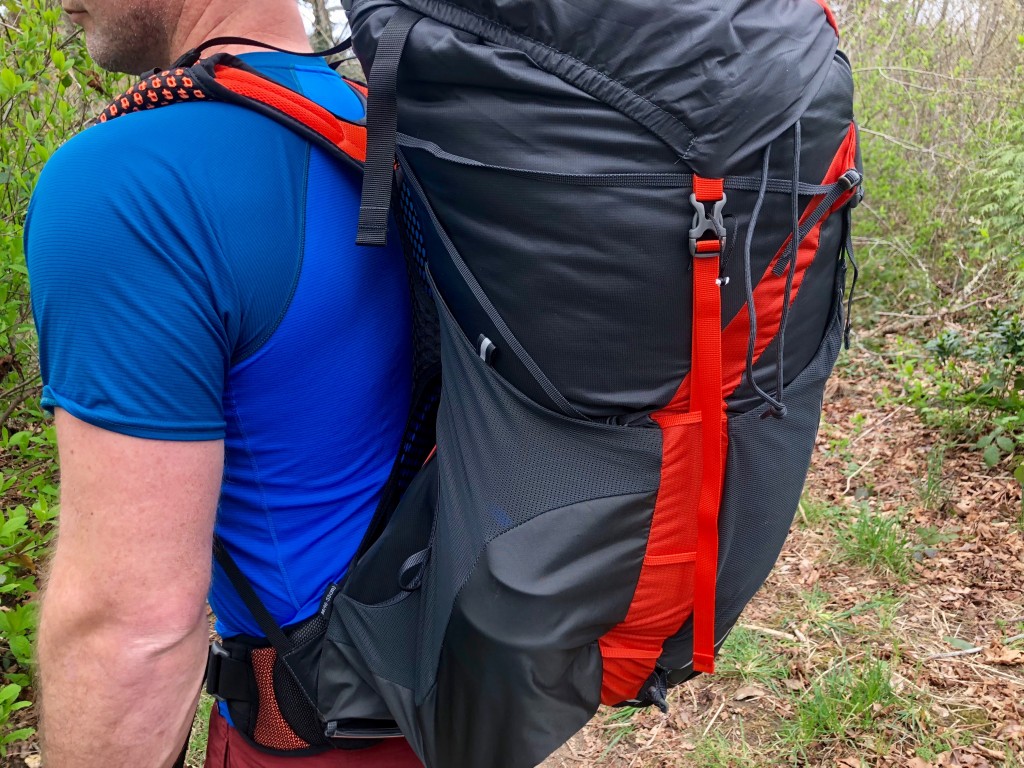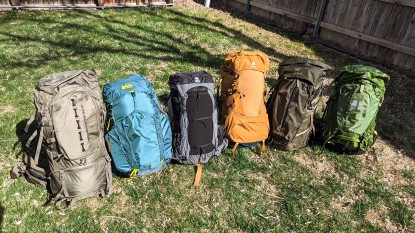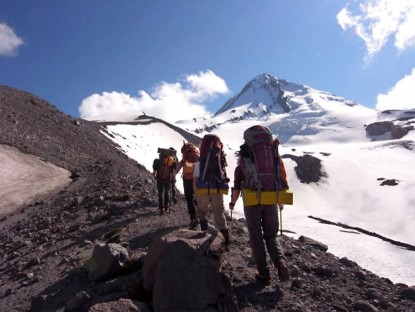Osprey Exos 58 Review
Our Verdict
Our Analysis and Test Results
Osprey has updated this product since our review was originally written. The photos above compare the older model we tested (left) and the newer model (right). We see an upgrade to the AirSpeed suspension system, including a stronger mesh aimed at improving the durability for thru-hikers and a new “ladder” adjustment system purported to offer up to four inches of torso adjustability. With the option for height adjustment, the pack is now offered in two split sizes: S/M and L/XL. The pack is now sewn with bluesign-approved recycled material: 100D high tenacity nylon ripstop for the top and bottom and 400D high tenacity nylon backing tie-down points. The pack now features two hip belt pockets and comes with a PFC/PFAS-free DWR coating. While our review still pertains to our experience with the old version, we are now linking to the new Exos 58L, which is now readily available for purchase.
If you're looking for a super lightweight pack but aren't sure you want a fully frameless model, the Osprey Exos 58 is one of the best possible options. It features a frame, cozy shoulder straps, and a relatively robust waist belt. These attributes mean it is slightly heavier than a frameless ultralight pack but is WAY lighter than most traditional backpacking packs and significantly more comfortable than more minimally designed frame-less packs. Low weight aside, this model is simple, yet still keeps many nice features that go a long way toward making your backcountry trip more enjoyable.
Performance Comparison
Suspension and Comfort
The Exos 58 is surprisingly comfortable, especially considering its low weight. While it isn't quite as supportive or comfortable as many in this review, it is also generally lighter.
The fabric on the inside of the Exos 58 waist belt is cozy. Despite some initial skepticism, we discovered that the shoulder straps were quite comfortable as well, even with minimal clothing on. The padding is beefed up in the area of the shoulder strap that runs over the top and front of your shoulders, as this is the area that bears the majority of the weight.
This contender lives between the world of ultralight frameless packs and traditional backpacking packs. It is easily more comfortable to carry the 30-40 pound loads that a majority of backpackers will end up with than with a similar but frameless model.
This pack is well-ventilated as well. From its perforated shoulder straps to the space behind the back panel, this pack kept us cool on our midsummer testing trips, making the Exos 58 ideal for use in warmer climates. It's also an excellent option for people who just run on the warmer side. We tested this pack mountaineering on glaciers but didn't get to use it in actively snowing environments.
Despite its low weight, this pack still features a relatively robust suspension. It is excellent for loads up to 35 pounds, but beyond that, most of our testers felt that this pack was less capable and comfortable. It has a pretty stout aluminum frame but doesn't quite have the stiffness necessary in its hip belt or shoulder straps for heavier loads. That said, when carrying 25-30 pounds, we couldn't even notice a difference compared to more substantial options.
Features and Ease of Use
The Exos also has many features that make it easier and more convenient to use. One of our tester's favorite features is the stretchy mesh beavertail pocket on the back. The pouch is secure, and we found all sorts of uses for it, from all kinds of small items that we wanted to keep easily accessible or to keep smelly clothing or garbage away from the rest of our stuff. It was also great for unusually shaped items, like flip-flops or a frying pan.
The “Stow on the Go” system was a little gimmicky. It's a way of attaching the trekking poles to the pack via a stretchy band near the bottom of the pack and an attachment on the shoulder strap; this feature was not as useful as we thought it would be. While practical for short distances, most testers who needed to stow their poles on their pack for more than 10 minutes just stored them on the side where they are more secure. The waist belt pockets are decently sized, comfortably fitting a couple of protein bars or a small point-and-shoot camera.
The lid of the pack wasn't as easy to use as other models, primarily because it wasn't as easy to search through. It features one small pocket on the top of the lid and a full-sized mesh pocket underneath. All of our testers loved the mesh pocket, which was easy to see into, but the top lid pocket has a narrow opening. The one thing the top lid had going for it was its beautiful bright yellow-colored interior, which helped with searching for lost items.
There is a narrow strap at the bottom of the pack that works great for a 3/4 length closed cell foam pad but isn't quite long enough for most full-length (6 foot) ones. For early season hikers or just folks enjoying the occasional mountaineering trip, we appreciated the pack's single ice axe loop that we felt only helped add to the pack's versatility.
Weight
At 2.7 pounds, this pack is a true featherweight. For folks whose primary concern is the weight but can't entirely ditch the support of a frame, look no further. You sacrifice a little bit of durability to get such a light package, but not much, and we found this wasn't a big deal at all on trips where the user is traveling primarily on trails.
The Exos 58 has a super-light frame and a relatively minimalist design. It also has several smaller-than-normal buckles and compression straps. In our testing, we didn't find that these buckles were much harder to use than traditional-sized clips.
This model also offers several features that make stripping down the pack to an even lighter weight reasonably easy, including a removable lid.
Adjustability and Fit
While this pack is not technically adjustable, it does come in three sizes, which means you can likely find a pack that fits you well. We find most people shorter than 5'-4" or taller than 6'-4" may not be able to find an Exos 58 that fits just right.
Value
The Exos 58 is on the less expensive end of the spectrum among packs in our review. Most folks looking at the Exos 58 might consider other packs we've reviewed; it comes down to what a user needs and wants from their pack. But if you know that you have a lightweight load, then this pack is a great choice and a great value.
Conclusion
This model lives in a world between traditional backpacking packs and ultralight packs. We included it in our review because it features a frame and is quite comfortable for most folks that are going on a common backpacking trip. If you need the ability to carry weight greater than 40 pounds regularly but still want a lightish pack, there are burlier models out there, but for lighter loads, this pack is a dream.


